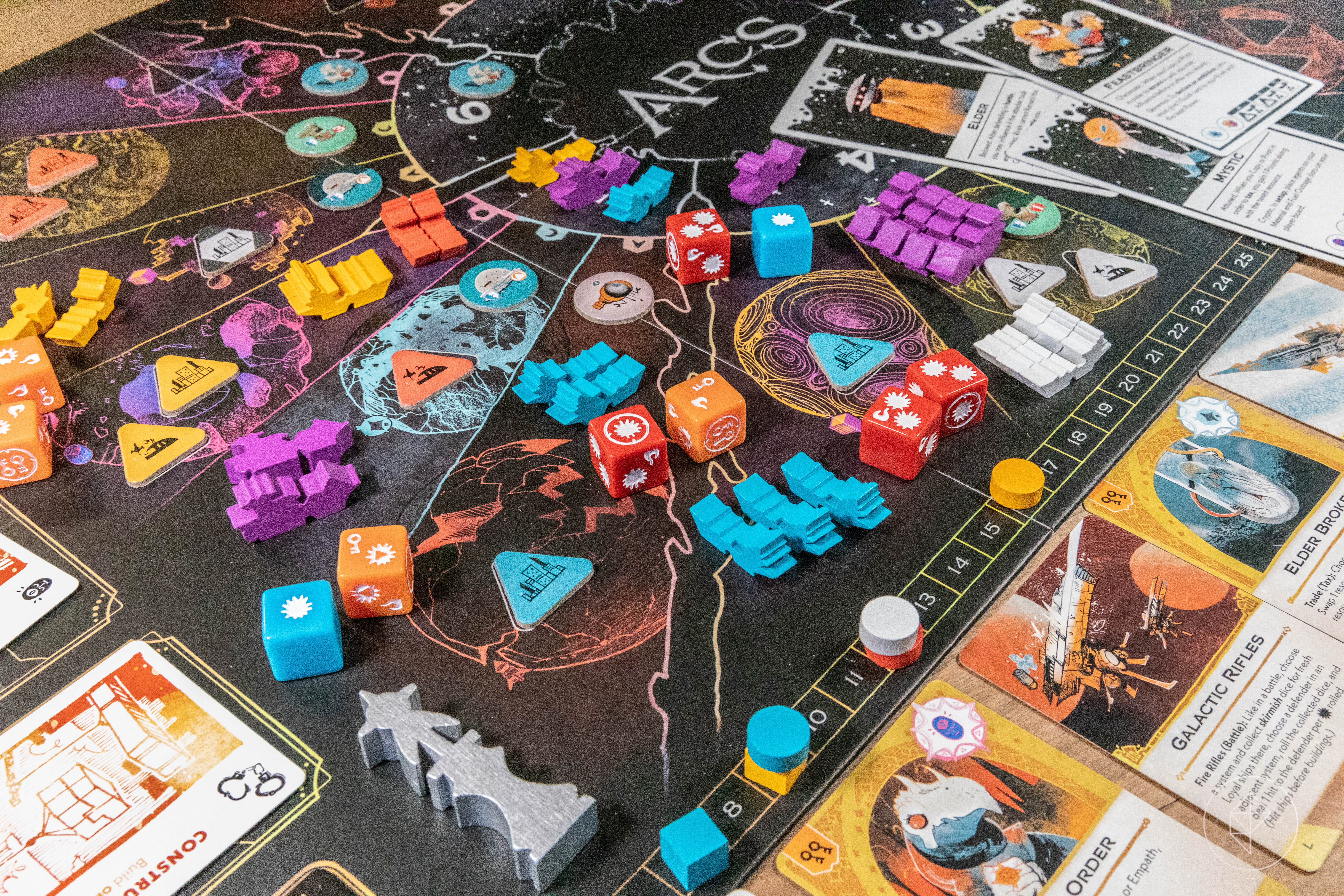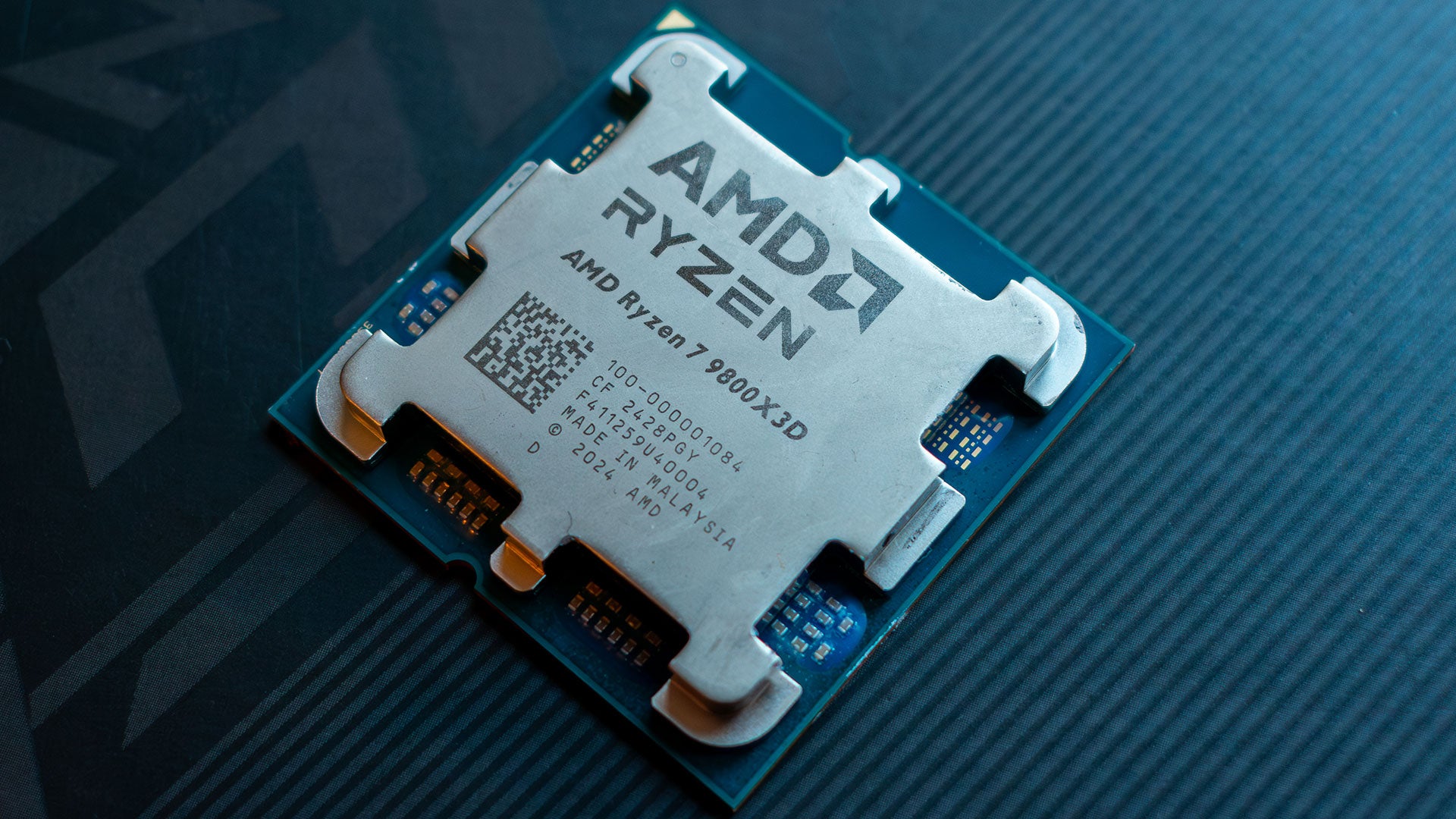
While it’s great to sit down for a concise and straightforward strategy game like Catan or Ticket to Ride, sometimes I’d rather explore a game that has a little more ambition. Often, I’ll turn to publisher Leder Games and designer Cole Wehrle to fill that need. This is the team responsible for the acclaimed Root: A Game of Woodland Might and Right, which seeks to model political violence under the guise of a cozy romp in the forest. Then there’s Oath: Chronicles of Empire and Exile, a game about building a ruling dynasty out of mere myth and legend.

When we award the Polygon Recommends badge, it’s because we believe the recipient is uniquely thought-provoking, entertaining, inventive, or fun — and worth fitting into your schedule. If you want curated lists of our favorite media, check out What to Play and What to Watch.
Arcs: Conflict and Collapse in the Reach is yet another radical attempt at tabletop innovation. The end result, available at retail beginning Oct. 1, is a unique approach to single-session strategy wargaming that evokes classics like Risk and Twilight Imperium. But when paired with a massive day-one expansion, Arcs morphs into a mind-blowing three-session campaign game with evolving rules and curious in-fiction discoveries. It’s completely over the top in all the best ways, and there’s nothing yet released quite like it.
The base game of Arcs is a fascinating exercise in subverting expectations. Players come to the table taking on the roles of different interstellar factions fighting for their existence in the Reach, a slice of space offering opportunity yet teeming with conflict. While this appears every bit a 4X-style game of science fiction conquest on the surface, that’s really just an illusion. With no exploration and very little technological development to speak of, it’s more accurate to consider Arcs to be a more traditional strategy wargame, one that requires manipulating clever yet restraining systems to pursue dynamic objectives.
But you’re also playing a game very similar to hearts, or another trick-taking game such as euchre or pinochle. And no, I’m not kidding.

When you sit down at the table, three to five players each get dealt a hand of cards with varying suits and values. One player “leads” with a card of a given suit, and others follow that suit or not.
This clever system is the entirety of Arcs’ action mechanism. It’s how you move about the board, attack your foes, and tax resources from planets. The suit dictates what actions you can perform, while the strength influences whether you get the entire benefit of the card you’ve played.
In order to perform a full turn and utilize the entirety of your card, you need to follow the lead suit with a card of a higher value. However, you can play off-suit and are not beholden to the lead. It’s less rigid than traditional trick-takers in this regard. But if you play off-suit, then you’re limited to only a single action instead of the card’s full power. This creates an interesting dynamic through restriction, as you will often want to expand your empire or build infrastructure, but the flow of play will push you toward other options, such as grabbing a card from the market and adding a new permanent ability to your faction.
This card play can feel bureaucratic, and that’s by design. These trick-taking mechanics are a stand-in for the political and economic machinations going on in the background, as if just off-screen you’re engaging with other galactic powers to negotiate and influence control of a given region of the Reach. Action flows from these decisions, as you toss out a card with the suit of Administration, dictating that the prevailing political winds have driven the round toward taxation and repair. But then an opponent smirks and pivots to Aggression, launching a small raid that upends the peacetime and causes upheaval. It’s alternately frustrating, dramatic, and inspiring — just like a good space opera should be.

All of this latent narrative energy explodes from the hand of cards you were dealt at the start of the round. Often, your empire’s ambitions will be undercut by the suits you receive, as this game is just as much about making due with what you have as it is about enacting well-laid plans. You will frequently need to reshape your strategy based on what cards you have, sometimes making for a few challenging hands — even entire games. This provides for an underlying tension that is omnipresent throughout.
One of the best parts of the card play is how the leader is determined each round. Arcs does have the traditional passing of control to whomever plays the highest strength card of the led suit, but there’s a way to throw a wrench in the works as well. Just discard one extra card in addition to the card you play, burning the opportunity to take another action that round in exchange for securing the initiative. But that’s not all you earn by being the lead player.
The first player each round may also select an ambition that will score victory points that round. Ambitions encourage players to behave in certain ways. Perhaps they need to collect the most war trophies or the most resources of several different types. That means gameplay is focused not just on piling up more points than your opponents but in determining what kinds of actions can score points at all. Much like how players determine what actions are possible each round, the group also will determine what ambitions are worthy of those actions, and thus which behavior is rewarded and incentivized. This is fascinating and unorthodox, as a particular play could result in almost no victory points being scored for conflict. The atmosphere at the table is altogether different when it’s a game that is heavily focused on taxing and securing oil reserves, rather than raiding planets and thrashing starfleets. All of this nuance adds a great deal of weight to the card play, tying its significance into the flurry of activity on the board.

If this was all that Arcs is, that would be enough. It’s a satisfying strategy game that feels quirky and unique in comparison to its peers. But Arcs is much more. With The Blighted Reach expansion the game is transformed into a multisession campaign with emergent narrative and tremendous mechanical evolution.
You begin the campaign with each player receiving a choice of two fates. These are similar functionally to the purpose of factions in most strategy games. Each fate is unique in tone and mechanical weight. Some are more interesting, introducing whole new systems to play that affect every single player. The density of rules increases significantly from the base game and everyone must totally buy in to the experiment. There is a lot going on and nearly all of it would be classified as spoilers.
What’s particularly interesting is that the board state is retained between each session. Your score rolls over as well, with the goal being to end up the winner at the end of the third and final session. This memory element works extraordinarily well to provide alternate incentives in the first and second game of a campaign. Players may perform actions to better their position for the future and forsake the current objectives. It’s an entirely new way to envision how you interact with Arcs, and it has a large influence on strategy.
But those fates also change over time. Each subsequent session you may abandon your fate and choose a new one, or you may have earned the opportunity to forge ahead and see what new systems and components are unlocked. It’s always a delightful moment akin to opening gifts on Christmas morning.
This is an absolutely wild design. There are elements of legacy games implemented, not in terms of permanently marking components, but in how the game is radically altered with consequences that ripple throughout play. The stakes are higher and the outcomes are richer. In this format, it’s a magnificent design that deserves recognition as one of 2024’s best releases.
Much of the brilliance of Arcs: Conflict and Collapse in the Reach is its imagination. Leder Games, through the success of Root, has established the breathing room to take these big swings. With care and a strong attention to detail, this outfit has continued to produce bizarre yet refined board games that push the boundaries of the format and offer experiences difficult to conceive. This is a brilliant game, one which we will be talking about and exploring for the foreseeable future.
Arcs: Conflict and Collapse in the Reach will be available starting Oct. 1 for $60. The Blighted Reach campaign expansion is also available, and costs $100 more.
Arcs: Conflict and Collapse in the Reach was reviewed using a retail copy provided by Leder Games. Vox Media has affiliate partnerships. These do not influence editorial content, though Vox Media may earn commissions for products purchased via affiliate links. You can find additional information about Polygon’s ethics policy here.
Source:https://www.polygon.com/review/458362/arcs-board-game-review-leder-games-cole-wehrle






